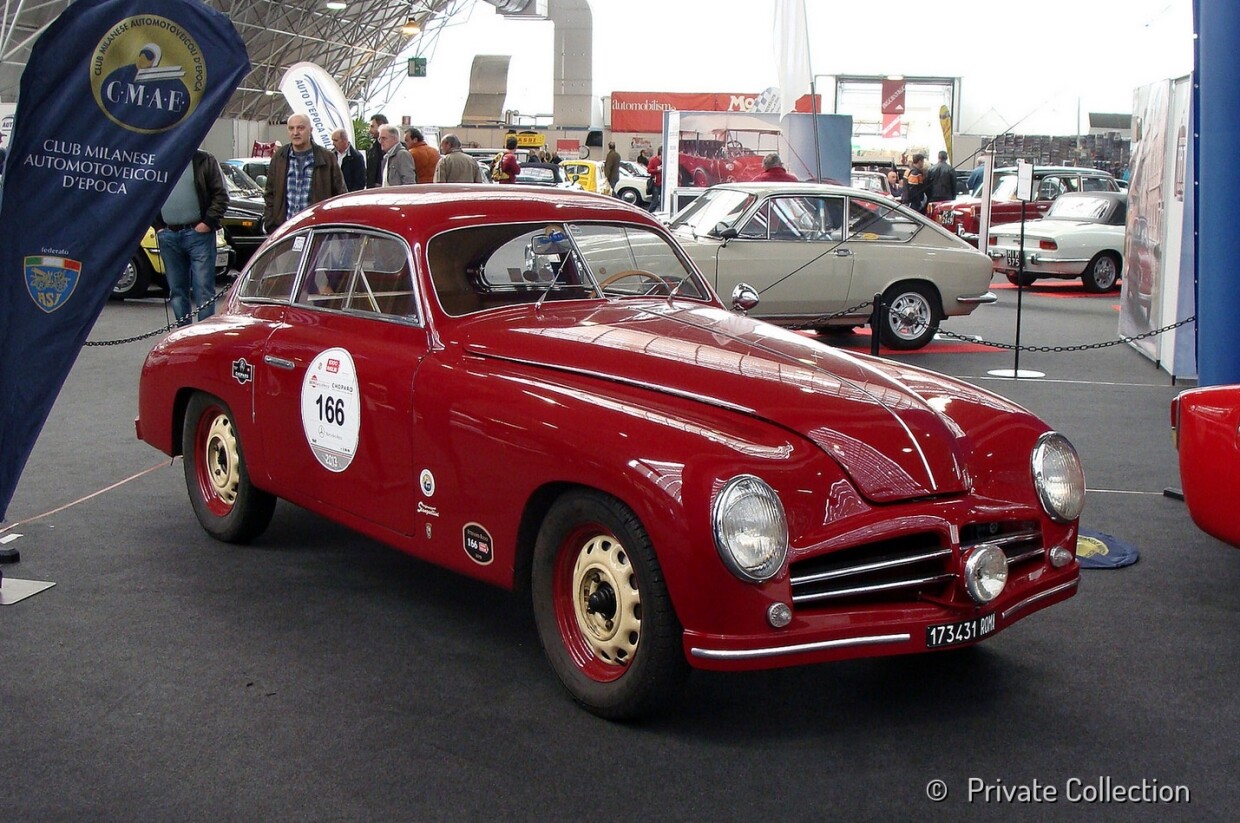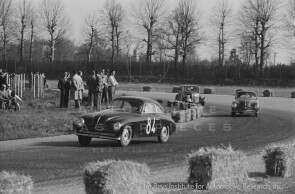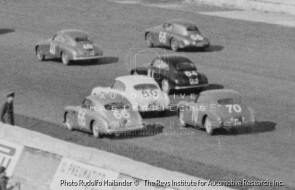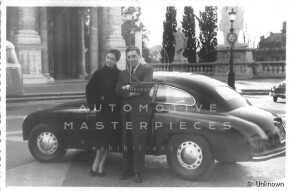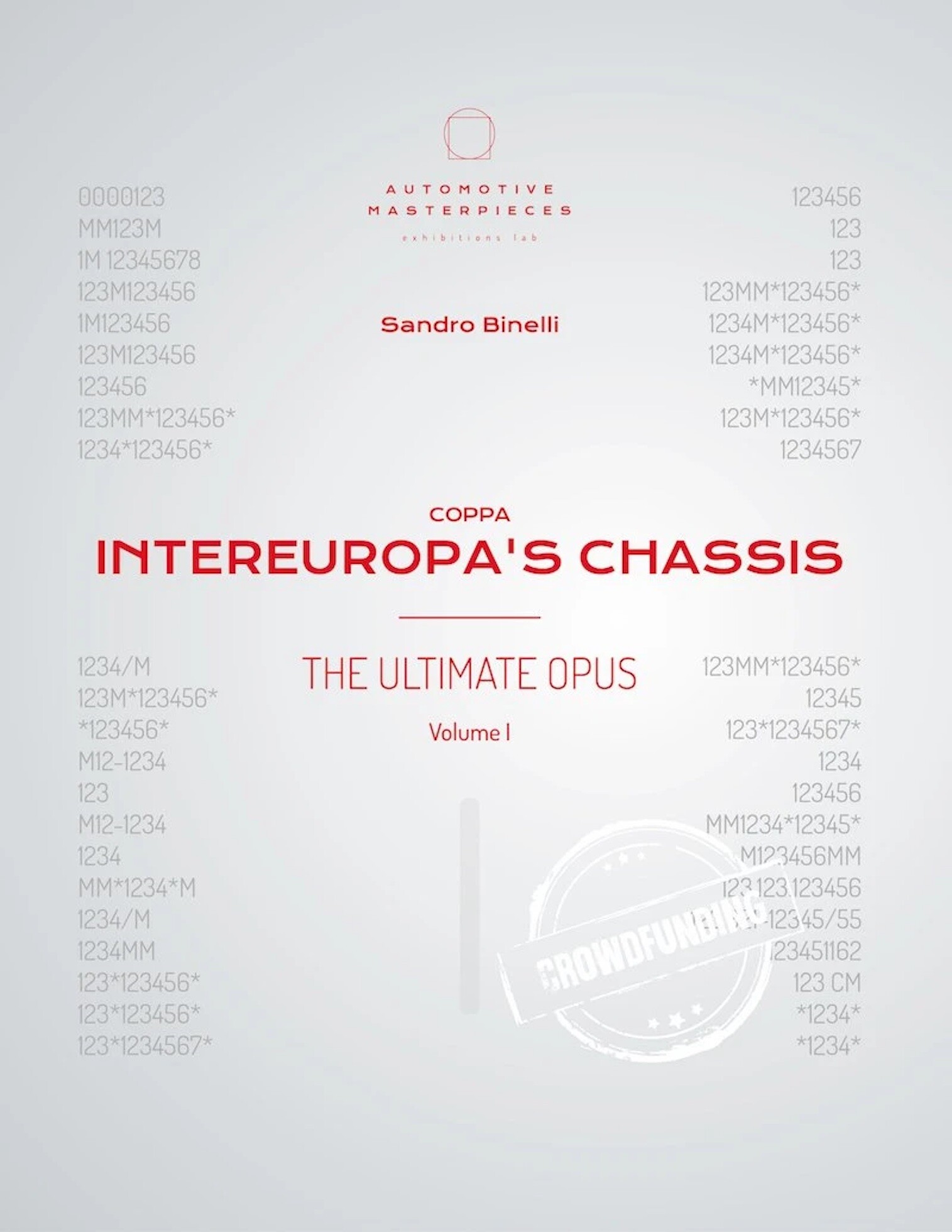
1947 Fiat Stanguellini 1100 Berlinetta Special
ON/OFF
Why am I an Automotive Masterpiece?
At the end of WWII, the Modenese Vittorio Stanguellini returned to racing with unchanged energy and got to work on the new series of 1100 Sport National, which were raced by several drivers at the 1947 Italian Championship. During the season the 1100 Stanguellini obtained 10 overall and 37 class wins and Nuccio Bertone was one of these successful drivers. But the meeting between Bertone and Stanguellini also led to a business agreement with the birth of a small series of a lightweight “4-seater Berlinetta Special” or “Sport”. It was designed for Carrozzeria Bertone with ponton styling by Fabio Luigi Rapi. Bertone exhibited the first specimen at the 1947 Villa d'Este concours. The Berlinetta was introduced with a Fiat 1100B chassis and a tipo 108 engine (the standard 32CV improved by Stanguellini to 43CV). Later it was built on a Fiat 1100 E chassis and fitted with the 60 bhp Stanguellini 1100 engine. Bertone bought the Fiat chassis, Stanguellini improved the engine in Modena and later Bertone made the body and fitted up the rest. The Berlinetta was produced between 1947 and 1954, in two different versions with an alloy or steel body. Some Fiat 1500 6 cylinder and Lancia Aprilia were based on this model, built with a welded steel one-piece shell. The price in 1948 was Lit 2.8 million, as like as a Lancia Aprilia Pinin Farina cabriolet. Thanks to the shape and to the weight it could compete with the Fiat 1100S (51CV) because it had a max speed of 150Km/h.
Chassis no. 290996 has a recently discovered competition life with the driver Enrico Manzini. As for the appearance of the car: the front of the car has a significant evolution in the first years, the reason is not known: whether an aesthetic choice (since it is, however, a "tailor-made" car), or simply the consequences of collisions that occurred in racing life. In 1950 we have a first image of a different nose from the current one: it has rectangular directional arrows on the sides of a slit, garnished with two polished profiles and, immediately above, a grilled and shaped air intake with the Fiat logo in the centre. Between 1950 and 1951 the rectangular arrows were eliminated. Between 1951 and 1952 there was a radical change to the front: 2 large air intakes appeared instead, each cut horizontally by 2 chrome pieces. The car retains this appearance to this day. About the racing career: chassis no. 290996 was mostly driven by Enrico Manzini. In 1950 faced two competitions: the Coppa della Toscana, ranking 7th in class, and the Stella Alpina, ranking 5th. In 1951 it was at the most important event of its career: the Coppa Intereuropa, where was good of a 11th place in class. In the same year it raced the III Coppa della Toscana with Achille Pinto, ranking 2nd in class. We have evidence of other three races in 1952, with Manzini again at the wheel: the Firenze - Fiesole (1st in class), the Coppa della Toscana (13th in class) and the Coppa della Consuma (2nd in class). We are confident that other racing events could emerge in research. A special feature of this car is that in 1954 the Ditta F.lli Giannini in Rome gave the engine a tune-up, as confirmed by the mortgage indicated on the chronological documentation.
